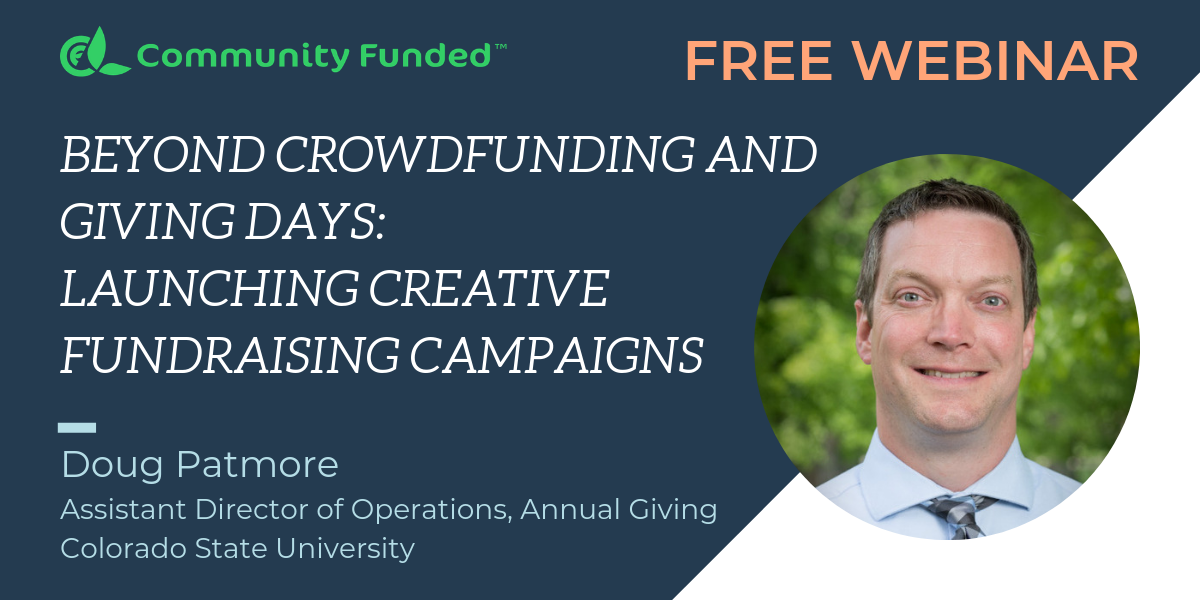min read

Let’s start with the obvious: having a strong online presence is an increasingly essential element of effective fundraising.
In a string of reports, we see digital methods of fundraising continue to grow as a preferred method for donors to transact:
- 54% donors worldwide prefer to give online with a credit/debit card. (2018 Global Trends in Giving Report)
- 8.5% of total fundraising came from online giving in 2018, which was an increase from 7.6% in 2017. This is based on data analysis from 3,549 organizations with $14.1 billion in total fundraising in 2018. (2018 Charitable Giving Report)
- Online giving has seen consistent year over year growth (NP Source)
- 2012: $19.2 billion
- 2013: $21.2 billion
- 2014: $24.1 billion
- 2015: $25.8 billion
- 2016: $27.8 billion
- 2017: $31 billion
This is regardless of age…
- Nearly 50% of Gen Ys, 40% of Gen Xers, and 40% of Baby Boomers are donating online. (Generational Differences in Philanthropic Giving Report)
- 55% of Millennial donors prefer to give online with a credit/debit card. (2018 Global Trends in Giving Report)
…and gift size:
- 49% of Micro donors worldwide ($100 or less) prefer to give online
- 57% of Small donors worldwide ($101-1,000 USD) prefer to give online
- 55% of Midsize ($1,001-10,000) prefer to give online
- 45% of Major donors ($10k+) prefer to give online (2018 Global Trends in Giving Report)
But, this is probably something you already knew.
So what do you do this information? How do you glean insight and integrate those takeaways into effective outreach for your online giving program?
Let’s take a deep dive into the data to uncover best practices for real-world implementation.
With an array of channels, platforms, and outside competition soliciting donors for their time and money, the first step is assessing where donors live and the ROI of your outreach.
Here are a few key takeaways to help you get the most out of your marketing:
Email is not dead, but it’s waning.

With an outpouring of daily emails, the inbox clutter has never been higher. Cutting through the noise is becoming more difficult every year, especially as people across generations use social platforms to supplement their news and information intake with what they acquire straight from their self-selected peer groups.
- Email messaging drove 28% of all online revenue in 2017. But email messaging drove only 13% of all online revenue in 2018. (M+R 2019 Benchmarks)
- Fundraising email response rate declined by 6% in 2017, to 0.06%. (NP Source)
What can you do about it?
- Use merge tags in email subject lines and messaging to personalize as much as possible.
- Emails with personalized subject lines are 26% more likely to be opened. (Campaign Monitor)
- Personalized emails deliver 6x higher transaction rates. (Experian)
- Increase omnichannel integration in your messaging to help it build through other channels.
- Emails with social sharing options increase click-through rates by 115%. (GetResponse 2018 Report)
- Use email to create multiple touchpoints outside of the ask.
- Crowdfunding campaigns get 126% more donations when owners update supporters. (NP Source)
- Send emails primarily to drive larger gifts over $100.
- Only 18% of donors under $100 were inspired to give via email, versus 33% of donors $1,000+ (2018 Global Trends in Giving Report)
Social Media encourages advocacy and small gifts.

While social media is certainly growing (both in its popularity and in the diversity of platforms), it’s still best suited to building brand awareness versus encouraging large gifts. Using it to frequently share informational updates or calls-to-action for advocacy is the best way to nurture these relationships.
- 55% of people who engage with nonprofits on social media end up taking some sort of action. (Dunham & Company)
- 53% volunteer their time
- 43% attend or participate in charitable events in their community because of social media.
- 21% of small peer-to-peer fundraising gifts are the result of a direct click-through on social media. (State of Peer-to-Peer Fundraising 2017)
What can you do about it?
- Consider supplementing your fundraising with Facebook tools and make sure rogue fundraising campaigns aren’t cannibalizing your Advancement donor pool.
- For every $100 in direct online revenue, nonprofits raised $1.77 through Facebook fundraising tools. Nearly all of this revenue came from Facebook Fundraisers, the peer-to-peer platform. (M+R 2019 Benchmarks)
- Make sure that all pages linked to from social media are mobile-friendly.
- Most mobile traffic comes from social media referral sources (60%)
- Consider adding Instagram as one of your social platforms.
- Instagram is the fastest-growing of the three social media platforms, with a 44% increase in the number of followers across nonprofit accounts. (M+R 2019 Benchmarks)
Text is a great way to drive action, just not transactions. Yet.

Text is a viable fundraising channel but lacks storytelling depth. While text-to-give does drive donations, for most nonprofits it’s less than 3% of total gifts. However, using text to drive engagement through backlinks to a landing page does have its merits. While many will not transact due to the perceived nature of mobile security, information gathering encourages donors to revisit for later engagements.
- Nonprofits reported a 21% conversion rate for desktop users on their main donation page. That is, if 100 desktop users clicked the big donate button on the homepage, 21 of them would actually complete their gift. For mobile users, that conversion rate was just 9%. So just getting mobile users to land on a donation page isn’t enough – there’s more to be done to make sure they complete a gift. (M+R 2019 Benchmarks)
What can you do about it?
- Try leveraging texts to drive phone calls.
- Text messages successfully drove phone calls at more than twice the rate that email advocacy messages drove traditional web-based actions (4.1%) (M+R 2019 Benchmarks)
- Your page should mobile-optimized for payment – talk about security on the donation form. Consider Apple and Google Pay and other forms of secure mobile payment.
- While more than 50 percent of respondents said they would consider giving by using their smartphones, only 15 percent have done so. Of those surveyed who said they have not used their smartphones to make donations, most cited one of two reasons: they’ve never been asked (47 percent), or they have concerns about security (43 percent). (Millenial Impact Report)
Overall, taking an omnichannel approach is the best way to leverage these channels. Try creating a tapestry of outreach to fulfill your fundraising goals.






